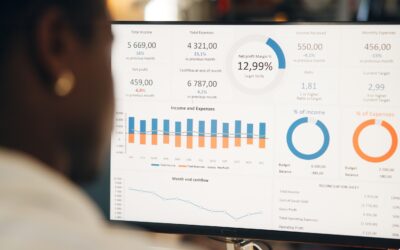Why Analytics Matter More Than Instinct
Nonprofit leaders are often driven by passion, but passion without data can lead to guesswork. Analytics provide the map that shows where you are losing donors, which campaigns actually work, and what strategies build long-term sustainability. Without a clear view of the numbers, it’s easy to mistake activity for progress. Analytics shift the conversation from “we think” to “we know,” giving your team confidence to double down on what works and cut what doesn’t.
The Metrics That Actually Move the Needle
Not all data is equal. Vanity metrics like social media likes may feel good, but they rarely predict giving behavior. The metrics that truly matter for nonprofits fall into a few core categories:
- Donor acquisition cost (DAC): How much it costs to bring in a new donor compared to what they give.
- Donor retention rate: The percentage of donors who give again after their first contribution.
- Lifetime value (LTV): The projected total a donor will contribute over their relationship with your organization.
- Recurring giving percentage: How many donors are giving on a monthly basis.
- Average gift size: The mean or median donation amount over a set period.
- Channel performance: Which outreach methods (email, social, events, direct mail) generate the best returns.
These metrics tell you whether your fundraising engine is healthy or struggling. They focus attention on long-term sustainability instead of short-term wins.
Donor Retention: The Hidden Growth Lever
One of the most overlooked metrics is retention. Acquiring a new donor is significantly more expensive than keeping an existing one. Yet many nonprofits pour most of their energy into acquisition while ignoring the supporters they already have. Retention is where revenue multiplies. By tracking this number and actively working to improve it, you create stability and growth. To see more about the fundamentals of loyalty, revisit the guide on donor retention.
Acquisition Costs and Why They Matter
It’s not enough to bring in donors—you need to know what it costs to do so. If you spend $200 to acquire a donor who only gives once at $50, that strategy isn’t sustainable. But if that donor converts to a recurring monthly supporter, the math changes dramatically. That’s why tracking donor acquisition cost alongside lifetime value is so powerful. Together, they reveal whether your campaigns are worth scaling or need to be redesigned.
Recurring Giving as a Stabilizer
Monthly donors create the bedrock of predictable revenue. Knowing the percentage of your donor base that gives regularly helps you forecast and plan with confidence. It also signals donor trust and satisfaction. Campaigns that emphasize recurring options tend to see stronger long-term performance. If you want practical steps for building this into your analytics framework, study the article on recurring giving strategy.
Segmentation and Analytics Go Hand in Hand
Analytics become more powerful when paired with segmentation. A single retention rate doesn’t tell you much if you can’t see how it differs between first-time donors, major givers, or recurring supporters. Segmenting your data allows you to identify weak spots and opportunities. For example, if recurring donors retain at 85% but one-time givers retain at 25%, you know exactly where to focus your efforts.
Using Analytics to Refine Storytelling
Data may feel cold, but it guides the stories you tell. If open rates drop when your emails focus only on statistics, but rise when they include impact narratives, that’s insight you can use immediately. Analytics highlight what resonates. For a framework on building narratives that convert, see the resource on storytelling for donor conversions. Pairing numbers with human-centered stories is how you win both hearts and wallets.
Common Pitfalls in Nonprofit Analytics
Nonprofits often stumble when tracking analytics by falling into a few traps:
- Tracking too much: A bloated dashboard hides the metrics that matter most.
- Focusing on vanity metrics: Website traffic or follower counts are useless unless tied to giving behavior.
- Failure to act: Collecting data but never adjusting strategy is a waste of resources.
- Lack of consistency: Sporadic reporting leads to blind spots. Analytics must be tracked regularly to reveal trends.
Tools That Make Analytics Manageable
You don’t need enterprise-level systems to begin. Start with the tools you already use:
- Most donation platforms include dashboards with retention, recurring rates, and average gift size.
- Email marketing software tracks open and click rates, which serve as engagement indicators.
- Basic spreadsheets can track acquisition costs and donor lifetime value if you log data consistently.
As your organization grows, consider layering more advanced CRMs or visualization tools, but the key is consistency, not complexity.
How to Implement Analytics Step by Step
If you’re just getting started, focus on simplicity. Here’s a basic roadmap:
- Choose three core metrics: retention, acquisition cost, and recurring donor percentage.
- Set a baseline using last year’s data.
- Create quarterly check-ins to review and discuss progress.
- Assign ownership. Someone on your team must be responsible for collecting and interpreting data.
- Celebrate progress. Share wins with your staff and board when metrics improve.
How Analytics Influence Donor Trust
Donors expect transparency. When you measure and share your outcomes, you reinforce credibility. Publishing metrics such as donor retention or recurring support rates signals that you are serious about stewardship. Trust is fragile, but analytics help protect it by proving that your organization operates with accountability.
Practical Ways to Act on Your Data
Analytics are only valuable if they change behavior. Some examples:
- If retention is low, increase donor touchpoints with thank-you calls or updates.
- If acquisition costs are too high, shift to channels with stronger ROI.
- If recurring giving is stagnant, make the option more visible on your donation forms.
- If average gift size declines, test suggested amounts that better align with donor expectations.
Why Analytics Future-Proof Your Nonprofit
The fundraising landscape is only getting more competitive. Donors have endless options, and organizations that guess instead of measure will struggle. Analytics allow you to adapt quickly, allocate resources wisely, and keep your board aligned with real progress. A culture that values analytics doesn’t just improve fundraising—it builds resilience.
Next Steps to Strengthen Your Analytics
- Pick three metrics that matter most and commit to tracking them consistently.
- Share insights with your team and board so everyone understands the data story.
- Run one test each quarter based on analytics. Adjust campaigns based on the results.
- Document your progress to build institutional memory and avoid repeating mistakes.
Analytics as a Leadership Advantage
Great leaders don’t just inspire; they make data-driven decisions that strengthen their mission. By embracing nonprofit analytics, you move from reactive to proactive. Instead of wondering what happened after a campaign ends, you’ll know what is happening in real time and how to adjust. That clarity is the difference between short-term survival and long-term growth.




0 Comments